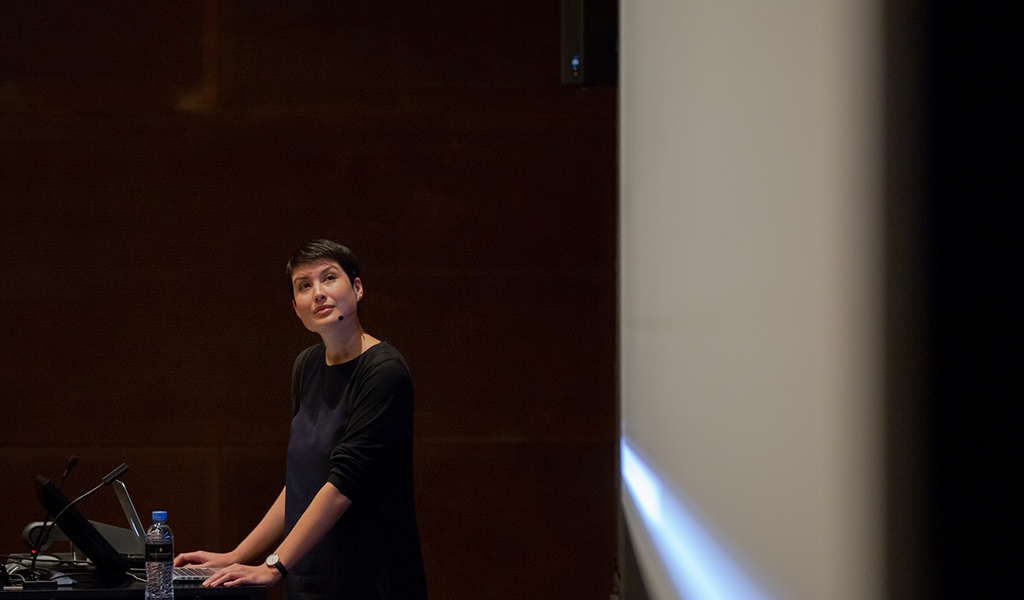Virtual and augmented reality executive speaks at NU-Q
As part of the recently opened Media Innovation Lab (The MIL) at Northwestern University in Qatar, an expert on virtual and augmented reality spoke at the University. Mia Tramz, Emmy-winning producer and editorial director of enterprise and immersive experiences at TIME Inc., spoke about virtual reality as a new tool for storytelling.
In line with the MIL’s theme for the year, “Virtual and Augmented Reality in Storytelling and Media,” Tramz spoke at a public lecture and held several workshops for the NU-Q community to learn more about the components of creating VR and AR content.
“Mia’s work in AR and VR is at the forefront of futuristic storytelling,” said Everette E. Dennis, dean
Tramz oversees the operations at LIFE VR, a digital extension of LIFE magazine, and also heads the AR and VR initiatives of more than 35 other brands including TIME, People, Sports Illustrated, Real Simple, Essence, Southern Living, and InStyle. A four-part documentary series she produced for Sports Illustrated, following the journey of three climbers ascending Mount Everest, won an Emmy Award for Outstanding Digital Innovation.
At a community meeting, Tramz gave examples of how VR can be used to share new perspectives and the processes behind producing some of the organization's most notable projects in a quickly developing medium.
“VR does a lot of things really well — it's sort of magical. It can create wonder; it can be hilarious or scary. There are many different applications for it.”
Although a specialist in the field, Tramz does not see VR as an emerging alternative to photojournalism or documentary films, but rather as another way to take audiences to new places in ways that might otherwise seem distant or unreachable. "VR does a lot of things really well — it's sort of magical. It can create wonder; it can be hilarious or scary. There are many different applications for it," Tramz said.
Her projects have transported audiences to Mars, to the glaciers of Iceland, and behind-the-scenes with Hugh Jackman to the set of the movie The Greatest Showman.
In her journalistic projects, Tramz faces the same rigorous standards for accuracy – even in environments produced fully with computer-generated imagery. Stories that take viewers to the frontlines of Pearl Harbor or on-board a ship fleeing the Nazis all contain objects and information that were gathered through research from archival images, ethnographic museum collections, and first-hand accounts.
At a workshop for students, faculty, and staff, she provided practical tips on producing VR content, which included knowing your audience, recognizing the high production costs of the technology, and understanding the importance of being selective with the medium.
“VR is not enhanced cinema – its interactive theatre,” she said, adding that passive audiences are transformed into active players once they are in new territory across borders, behind walls, and in foreign lands. While this has allowed for powerful storytelling, she believes its full effect is not appreciated if used without a defined purpose.
Tramz encouraged attendees to experiment with the new technology available at the Media Innovation Lab and take storytelling into new arenas. “If you are considerate of your readers and give them a way into your story that isn’t intimidating, the technology can help you reach whomever you intend to reach,” she said.

